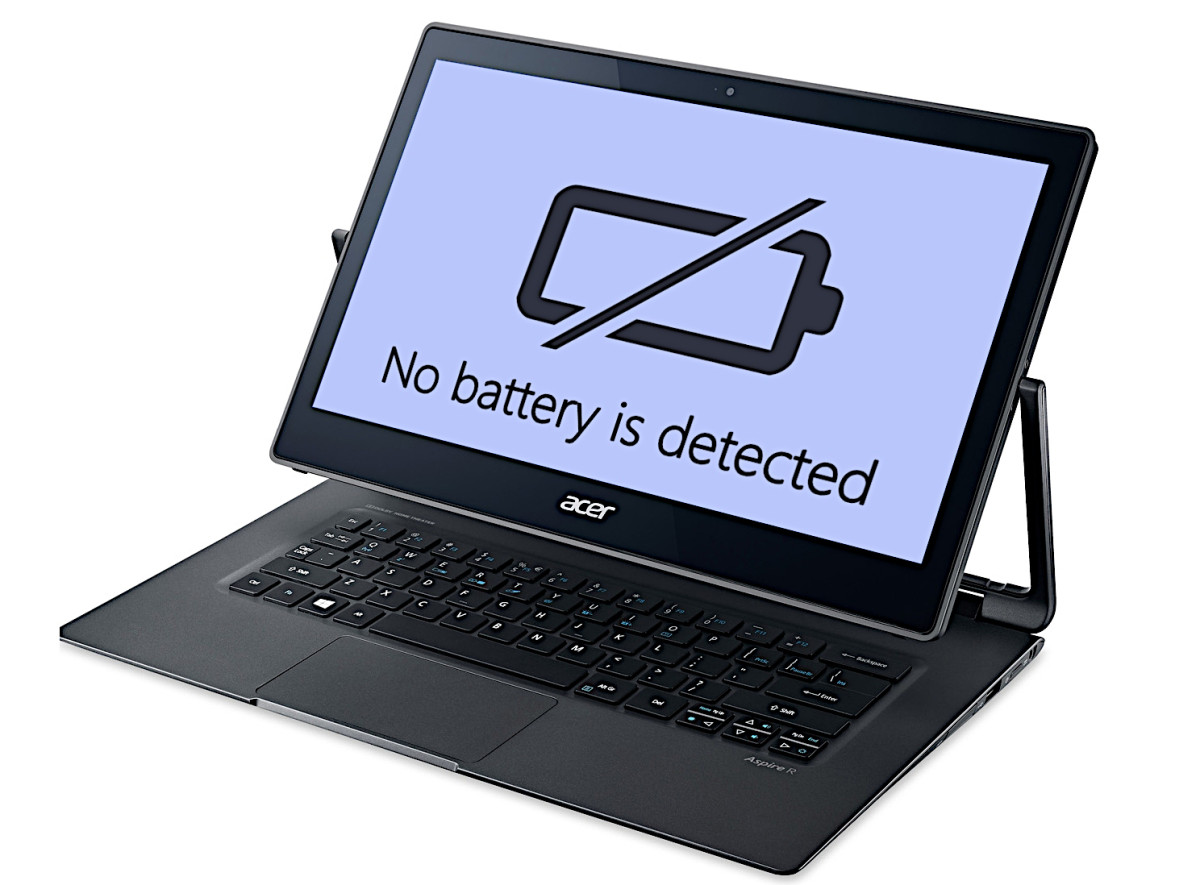“255% available (plugged in)” “Unknown Remaining” “No battery is detected”
Error messages like these are generally associated with software problems and out-of-date drivers. The “battery not detected” error messages, however, can also be triggered by physical damage to the battery or the laptop hardware. During my research on the subject, I noticed that users usually report one of those errors or another but not all at the same time. I have recently faced the issue where the replacement battery was not physically damaged and working fine, but Windows was not able to detect it and was giving all of the errors listed above. I tried all of the commonly-suggested fixes I could find on tech support forums, online communities, and YouTube, but to no avail. At the end, I was able to find the cause of the problem and fix it. I’m writing this post in hopes that it will help someone who is experiencing the same issue.
Problem Signs
1. “255% Available (Plugged In)”
After installing the new battery and starting the laptop, I noticed a blank (completely empty) battery icon on the taskbar. When I hovered over the icon, the battery meter was showing “255% available”, which was, of course, not possible. I plugged in the charger and the battery meter changed to “255% available (plugged in)”.
2. “Unknown Remaining”
I restarted the laptop, hoping it was just a hiccup, but it wasn’t. The battery meter started showing “Unknown Remaining”.
3. “No Battery is Detected”
I then decided to take out the battery, thinking that maybe it wasn’t seated properly or wasn’t making good contact. After putting it back in, a “No battery is detected” error message appeared. Oddly, the laptop was unplugged and drawing power from the battery just fine, but Windows was not able to “see” that there was a battery installed. Next, I opened the Acer Care Center app and ran a battery health check. According to it, there was a battery present and its status was “Good”.
4. Power Light Indicator Constantly Blinking
I also noticed that the power light indicator for the battery was constantly blinking. I shut down the laptop (not sleep/hibernate/suspended), unplugged the AC charger, but it didn’t stop blinking like it should. I even did several hard resets to discharge the battery, with no effect.
5. Not Able to Recognizing the Original Battery
I decided to remove the new battery, re-connect the original one, and see if Windows still recognizes it. Surprisingly, Windows was not able to “see” the original one either. After searching the internet for hours and trying every possible fix to no avail, I started examining the battery connector plug. I noticed that one of the mini-perforations in the plastic was only partially opened (see the left picture below). The rest were all shapes and sizes, and there were even small pieces of untrimmed plastic tucked in them. Battery connector socket pin, bent by defective connector plug, not sending the right connection data to Windows. When I checked the battery connector socket – the one soldered on the motherboard – I saw that the pin, corresponding to the partially opened perforation on the connector plug, was bent and touching the pin next to it. Clearly, the unperforated plastic has pushed and bent the pin, and the battery was not sending the right connection data to the Windows. This was the reason why after re-connecting the original battery, Windows was not able to recognize it either. I assume that the different error messages were connected to the extent to which the pin was bent. It is possible that immediately after installing the replacement battery, when the “255% available” error appeared, the pin was only slightly bent and just not making good, or any, contact with the battery plug. The subsequent disconnection and re-connection of the battery, probably bent the pin to a point where it was touching the adjacent pin, which possibly triggered the “No battery is detected” error. This, of course, is just an assumption. With the help of a needle and a SIM-card-eject-pin I was able to straighten the bent pin. Then I installed the original battery and the laptop immediately recognized it and showed the remaining charge. Needless to say, the new one was returned the next day. Since then I have ordered another replacement battery and it is working with no issues. You can straighten bent pins with a needle. Be careful, they are fragile.
Tips
I found it very difficult to check the connectors’ condition with a naked eye because the perforations and the pins are really tiny. They may even look fine at a first glance. I would suggest using a magnifying glass or better yet – grab your camera, zoom in, and take a picture to really see what is going on. If you don’t find any damaged pins in the on-motherboard connector socket, it is worth checking for dirt, debris or corrosion. These can cause similar problems. Trying to straighten a bent pin can also damage it and the repair can be costly. If you don’t feel comfortable doing it, take your device to a repair shop. To reduce the chance of this sort of problem happening to you, always check the connector plug of your new battery for defects before installing it.
Fixes That Didn’t Work
As a reference, here is a list of the fixes I found online but, unfortunately, didn’t work for me.


